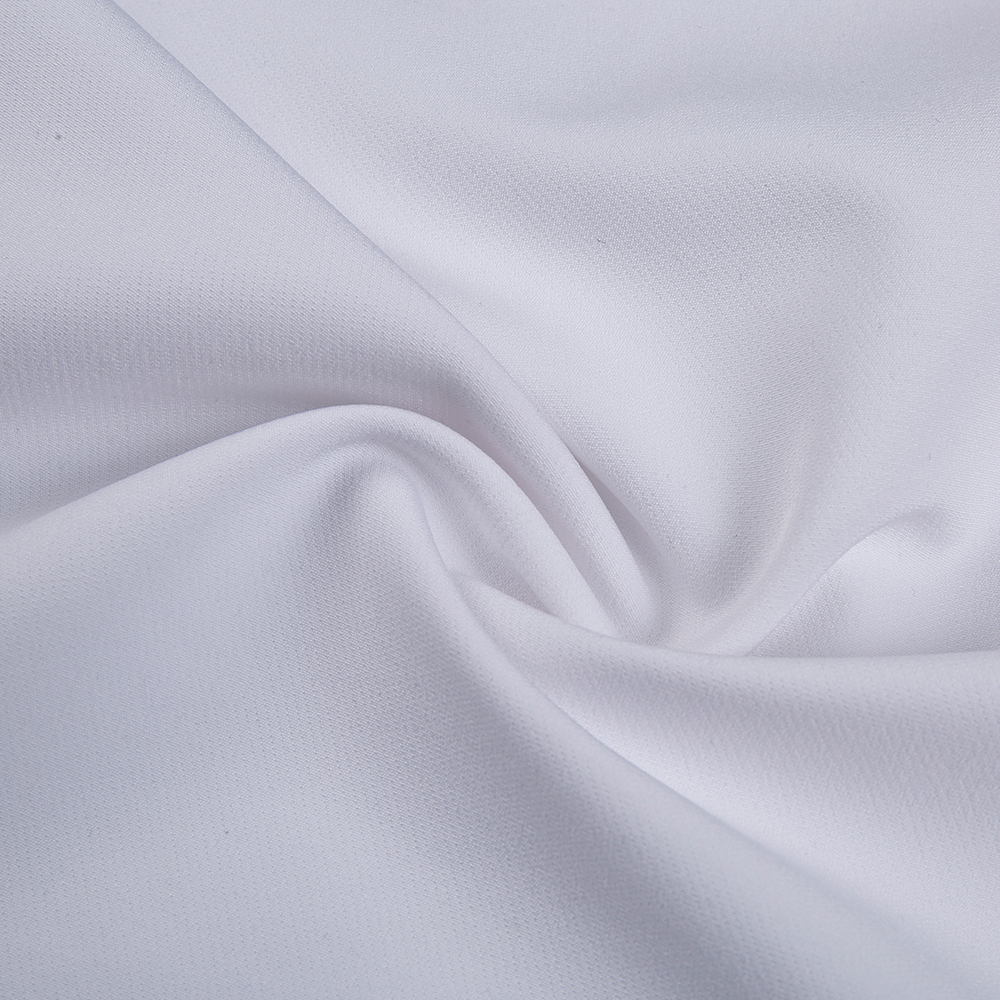Spandex fabric, while known for its exceptional elasticity and recovery, can vary in its resistance to abrasion , pilling , and wear depending on several factors, including the blend of fibers, construction, and intended use. Below is a detailed explanation of how spandex fabric performs in these areas:
1. Abrasion Resistance
Inherent Properties: Pure spandex has moderate abrasion resistance due to its soft and elastic nature. However, when blended with other fibers like nylon or polyester, the overall abrasion resistance improves significantly.
Blends Matter:
Nylon-Spandex Blends: Nylon adds strength and durability, making the fabric more resistant to abrasion. These blends are commonly used in activewear and sportswear.
Polyester-Spandex Blends: Polyester enhances wear resistance and reduces moisture absorption, which can improve the fabric's ability to withstand friction.
Testing Standards: Abrasion resistance is often measured using tests like the Martindale Test or Wyzenbeek Test , where the fabric is rubbed against an abrasive surface under controlled conditions. High-performance spandex blends typically achieve good results in these tests.
2. Pilling Resistance
Pilling Causes: Pilling occurs when short fibers break loose from the fabric surface and form small balls (pills). Spandex itself does not pill because it is a continuous filament fiber, but the other fibers in the blend may be prone to pilling.
Factors Affecting Pilling:
Fiber Blend: Fabrics with shorter staple fibers (e.g., cotton) are more likely to pill than those with longer filaments (e.g., polyester).
Weave or Knit Structure: Tighter weaves or knits reduce the likelihood of pilling by keeping fibers securely in place.
Surface Finish: Anti-pilling treatments or smooth finishes can minimize the formation of pills on the fabric surface.
Applications: Spandex blends used in high-quality activewear or swimwear are often treated to resist pilling, ensuring a smoother appearance over time.
3. Wear Resistance
Durability Over Time: Spandex's elasticity allows it to recover its shape after stretching, but repeated stress can weaken the fibers and reduce its lifespan.
High-Stress Areas: In garments, areas like seams, knees, and elbows experience more wear and may show signs of degradation faster. Reinforcing these areas with stronger fibers or double stitching can improve longevity.
Environmental Factors: Exposure to chemicals (e.g., chlorine in pools), UV rays, and heat can accelerate wear and tear on spandex fabrics. For example:
Swimwear: Chlorine-resistant spandex blends are designed to maintain their integrity in pool environments.
Outdoor Use: UV-resistant coatings or blends with polyester help protect spandex from sun damage.

4. Factors Influencing Performance
Fiber Content: The percentage of spandex in the blend affects wear resistance. Higher spandex content increases stretch but may reduce durability. A balance between spandex and other fibers (e.g., 80% nylon, 20% spandex) is often optimal for performance.
Construction: Knitted spandex fabrics (e.g., tricot or raschel knit) tend to offer better stretch and recovery than woven fabrics but may be more prone to snagging or abrasion.
Usage Patterns: Regular washing, exposure to rough surfaces, and improper care can accelerate wear and tear. Following care instructions (e.g., hand washing, avoiding high heat) helps extend the fabric's lifespan.
5. Real-World Examples
Activewear: Spandex blends in athletic clothing are engineered for high durability and resistance to abrasion during physical activity. Garments may include reinforcements in high-friction areas like inner thighs or underarms.
Swimwear: Chlorine-resistant spandex ensures that swimwear retains its shape and color even after prolonged exposure to pool water.
Compression Garments: Medical-grade compression garments use high-quality spandex blends to maintain consistent pressure without losing elasticity or developing pills.
6. Limitations
Pure Spandex: Pure spandex is rarely used alone due to its low abrasion resistance and tendency to degrade quickly under stress. It is almost always blended with other fibers to enhance durability.
Heavy Use: Even high-quality spandex blends may eventually show signs of wear, especially in applications involving frequent stretching or contact with rough surfaces.











